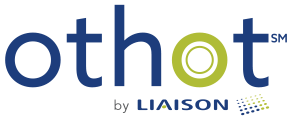Advanced Analytics Prompt a New Paradigm in Student Success

Chris Lucier
Where We Are and Where We Need to Go with Student Success in Higher Education
I transitioned from the US military to higher education enrollment management 20 years ago. During the first 12-15 years of my career, my impression was that the majority of higher education institutions “talked” about the importance of retention and persistence to graduation, which I will refer to as student success through most of this blog. However, by and large, few institutions were truly “walking the talk.”
Examination indicated minimal investment, little or no research or analysis to inform our strategy and tactics, and no attempts to assess the impact as often happens in higher education.
Then, it was easy to pay lip service to student success in higher education.
There were plenty of prospective students in the pipeline ready to pay more for a college education. There was very little attention from the public and elected officials on whether students who went to college, often incurring debt, ever completed their degree.
Student Success Now
The situation changed from around 2007- 2015 when the proportion of high school graduates attending college declined in several states and regions.
The first demographic decline that hit higher education, along with burgeoning college costs and increasing student loan debt, which brought political and public attention to retention and graduation rates, shifted attention to the need to ensure students who enroll actually graduate, and that it takes the least amount of time as possible.
Broad (Unfocused) Efforts for Student Success
For a long time, most institutional efforts to improve student success were programs targeted toward students in general or focused on specific populations deemed “at risk.”
Examples of these programs include high-impact practices such as learning communities, service- and community-based learning, and first-year experiences. Bridge programs, academic enrichment programs, and student-life groups supplemented other institutional programs.
We either encouraged students or directed students to enroll in these programs.
In the best case, we based our action on analysis, for instance, we recognized that students with a certain combination of high school grades and standardized test scores had a high likelihood they would not persist.
In the worst case, we created programs based on anecdotes or what other institutions were doing, often institutions not like our institution in terms of the type of students enrolled or support programs already available.
Yet, College Students Still Did Not Retain
There is nothing wrong with these programs. In fact, research indicates they are essential elements to a comprehensive student success strategy.
Yet year after year, many students who participate in these programs do not return for the following academic term.
The problem is that broad programs don’t target the right intervention, to the right student, at the right time.
Further, the students who really needed to be involved in these programs did not participate, nor are they swept up by other student success tactics. Thus, the students did not persist.
Why? Data and Analysis Limitations
Our data and analytics look backward and do not focus on the individual student. It combines students, often in large clusters, based on similar quantitative factors: i.e., grades, test scores, race/ethnicity, socioeconomic background, and geography.
While clusters provide a means to target an appropriate population, which we then characterize as “at risk,” it fails to consider all the variables that may affect student retention. Nor does clustering assess the ebb and flow of the impact of the variables collectively in affecting student retention over time.
When we characterize all students of a population as “at-risk,” we fail to recognize that student success is a multi-variate challenge. Some of those students are not really “at-risk” at all, and there are probably students in other populations who are “at risk.”
This makes it a challenge to optimize our student success resources.
For example, consider a good student who is concerned about the rigor of college, studying biology, who is from a middle-class family. The student doesn’t present as “at risk” for your institution from the quantitative data you have on the student. It is late September, the student has received Cs on their first few tests in their STEM classes, they are not getting along with their roommate, they’re a vegetarian and don’t like the choices in the dining hall, and they like to work out, but always with a friend, so they haven’t been to the fitness facility yet.
- What variables are affecting the student’s likelihood of persisting today?
- What is the right intervention to employ?
- What about next week after they find a friend to work out with at the gym? What about in a month when one of their parents loses their job, and the family can’t make the last installment of the semester bill, and the student can’t register for next semester?
- Do you have the mechanism to identify the risk factors as they arise and take the appropriate actions?
The Solution: Advanced Analytics for Student Success
Better than traditional analysis that typically only looks backward, advanced analytics comprise predictive analytics, what is likely to happen, and prescriptive analytics, what can you do to affect the likely outcome.
Above, I presented the problems with a simplified analysis based on only a few variables used to identify which students are at risk and when they are at risk. You will miss students, and you cannot effectively deploy your resources to apply the appropriate intervention(s) at the appropriate time(s).
Predictive analytics models empower you by analyzing many variables, including behavioral data, and the impact these variables have on each other, and then apply a likelihood-to-persist score to every student. The probability of persisting can change daily. If you are updating data daily in the models, you will be able to quickly identify students who become at risk.
Prescriptive analytics for higher education allow you to identify which student success tactics will increase the likelihood of persistence at different times throughout the student’s academic career.
Behavioral Data Brings Additional Insights to Student Success
Behavioral data can contribute significantly to advanced analytic models. The data can come from card reader systems in residence halls, dining halls, fitness facilities, libraries, and learning labs.
Incorporating actual behavioral data into the models add additional fidelity to predict the likelihood to persist and the appropriate prescription to improve persistence.
For example, we have a student who has low mid-term grades and has never used the library or learning labs. We also have a student who has low mid-term grades and has visited the library and learning labs consistently.
Simply having an advisor refer both students to the learning labs and recommend they study in the library may not be the appropriate intervention for both students. There may be other variables affecting that student’s performance, and hence, a different tactic is required.
Survey data is also a powerful tool that provides behavioral insights when added to the models. For instance, pre-enrollment surveys that glean information about a student’s study and academic habits in high school can help power predictions that enable your team to direct academic support to the student early in the semester.
Surveys that discover how many hours students work per week may identify students for financial aid counseling and provide insights into their financial situation.
You Can See (Students) Clearly Now, The Rain is Gone
Yes, you have the data to see your students down to the individual student level and support their success with timely interventions if you couple the masses of data you have with predictive and prescriptive analytics.
Why wouldn’t your institution want to pursue this course of action?
Do you have unlimited student success resources, so you don’t need to optimize your resources for maximum return? Or, perhaps, student success isn’t really a priority for your institution.
As educators, our mission is to admit and enroll students to graduate in the fewest years possible to control their costs and debt. We all know it is much more cost efficient to retain a student than recruit another student to take their place from an operational effectiveness perspective.
High-impact practices and other programs that reach large groups of students are part of a comprehensive strategy. However, a surgical approach with advanced analytics ensures you know what students need, what intervention, and when.
As I have said many times in developing a student success strategy, “We want to take the appropriate student success action before the student even knows they need it.”

Chris Lucier



